Tulips are some of the most beloved and popular spring-blooming flowers in the world, and for good reason. With their iconic cup-shaped blooms in a wide range of colours, tulips add a burst of colour and cheer to any garden or vase.
Growing tulips in Australia can be a rewarding experience, but it's important to choose the right varieties and planting conditions. In this ultimate growing guide, we'll cover everything you need to know about growing tulips in Australia, including the best varieties to grow, how to propagate and care for tulips, common pests and diseases, and more.
More...
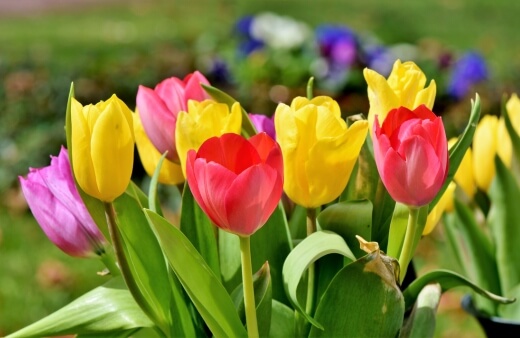
Family: | Liliaceae |
|---|---|
Genus: | Tulipa |
Species: | Various |
Origin: | Central Asia and Turkey |
Common Names: | Tulip |
Location: | Outdoor (some species can be grown indoors) |
Type: | Herbaceous plant |
Growth: | Varies, but typically 30cm tall |
Sun requirements: | Full sun to partial shade |
Foliage Colour: | Green or slightly variegated |
Flower Colour: | Pink, red, yellow, white, purple |
Flowering: | Winter to Spring |
Edible Parts: | None |
Maintenance level: | Low-maintenance |
Poisonous for pets: | Yes |
What are Tulips?
Tulips are bulbous perennial plants that are members of the Liliaceae family. These flowers are known for their distinctive and gently scented flowers, which can be found in nearly every colour imaginable, and in multiple forms, including single or double flowers.
Tulips are generally planted in autumn and bloom in spring, making them a popular and traditional choice for gardeners who want to make the most of the early part of the growing season and brighten up their outdoor space after a long winter.

Tulips' Natural Habitat
While tulips are commonly associated with the Netherlands, these flowers actually have a long history that spans from Turkey to Central Asia.
Tulips are native to Central Asia and Turkey, where they grow in a variety of habitats, from meadows to mountain slopes. These flowers prefer a temperate climate with cool winters and dry summers.
In Australia, tulips can be grown successfully in cooler regions, such as Tasmania, Victoria, and the Southern Highlands of New South Wales. In warmer regions, it is harder to grow tulips, but not impossible.
You’ll just need to make sure they have dappled shade, and stay reasonably cool through winter and spring.
Different Types of Tulips
There are more than 3,000 varieties of tulips available, and they can be divided into 15 different categories based on their characteristics. Some of the most common types of tulips include:
- Single early tulips: These are the first tulips to bloom in the spring and are known for their simple cupped flowers.
- Double early tulips: These tulips have double flowers that resemble peonies and come in a wide range of colours.
- Triumph tulips: These tulips are known for their sturdy stems and large, cupped flowers, which are found in every colour imaginable.
- Darwin hybrid tulips: These tulips have large, vibrant flowers on strong stems and are one of the most popular types of tulips for gardeners.
- Fringed tulips: These tulips have delicate fringed edges on their petals, giving them a gorgeously frilly appearance.
- Parrot tulips: These tulips have ruffled, fringed petals in bold colours with contrasting stripes and flames.
- Lily-flowering tulips: These tulips have long, pointed petals that curve outwards, resembling lilies.
- Kaufmanniana tulips: These tulips are known for their early bloom time and are some of the most cold-tolerant tulips available.
- Greigii tulips: These tulips have mottled leaves and brightly coloured blooms in unusual shades like orange and bronze.
21 Best Types of Tulips to Grow in Australia
1. Tulip Apeldoorn EliteThis Darwin hybrid tulip has large, bright red blooms on sturdy stems, and gorgeously gentle orange lobes on each petal, which overlap each other for a few fleeting weeks in spring. | 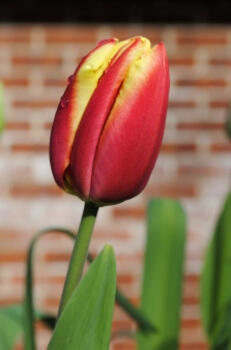 |
2. Tulip Queen of the NightThis single late tulip has deep maroon, almost black blooms that are perfect for adding drama to your garden. You don’t need me to tell you how rare black flowers are, so finding something this close makes it pretty irresistible to collectors. | 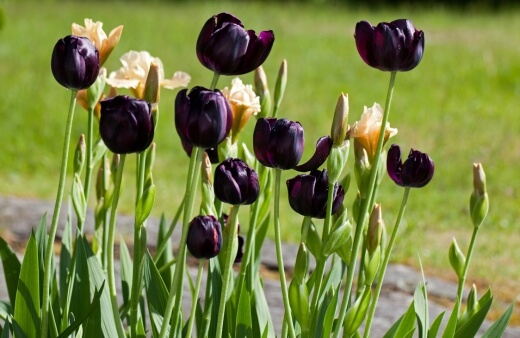 |
3. Tulip Monte CarloThis double late tulip has bright yellow blooms that are perfect for adding a pop of colour to your garden. | 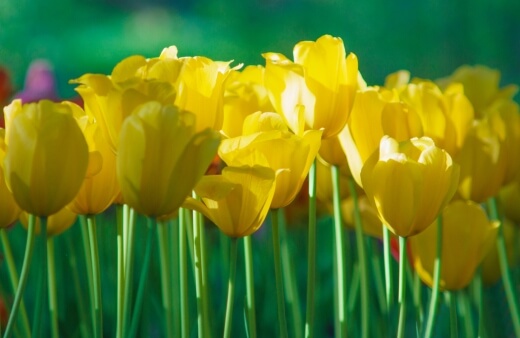 |
4. Tulip Orange EmperorThis Darwin hybrid tulip has bright orange blooms that will bring a burst of warmth to your garden. It’s petals flare out gently, and the short foliage allows the stems to stand out by themselves, which also makes them ideal cut flowers. | 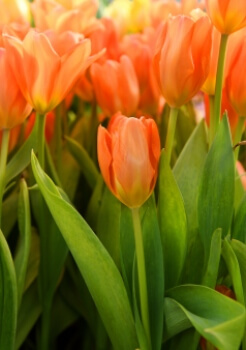 |
5. Tulip Pink ImpressionThis Darwin hybrid tulip has large, soft pink blooms that are perfect for adding a romantic touch to your garden. | 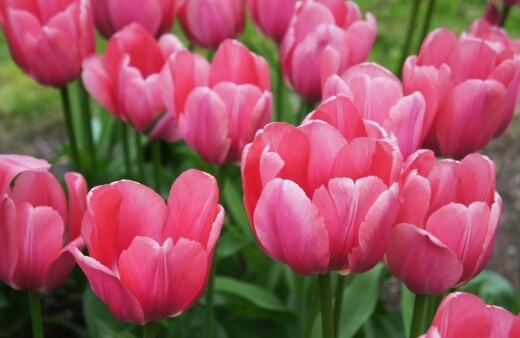 |
6. Tulip Red ImpressionRed Impression, a Darwin hybrid tulip, has large, bright red blooms that make a statement. For me, nothing will ever really come close to a basic red tulip, like Red Impression. They just sum up spring in the most simple way. | 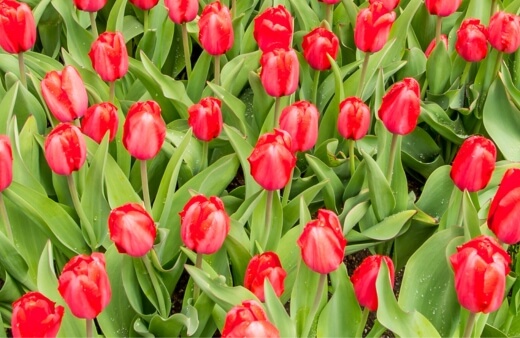 |
7. Tulip White TriumphatorA classic tulip variety, White Triumphator features large, pure white blooms that will brighten up any garden. With dramatically flared petals, and pristine white colouration, they are an ideal continuation from snowdrops, and add early colour to white borders. | 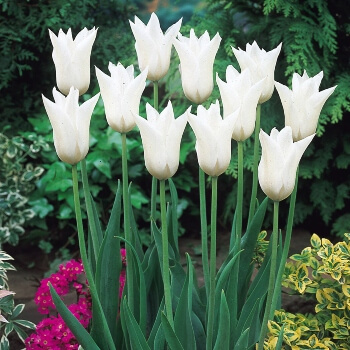 Source: J. Parker's |
8. Tulip Black ParrotThis dramatic tulip variety features bold, deep purple-black petals, offset by fiery pinks, that are sure to make a statement. Its ruffled blooms add an extra touch of texture and interest to any garden. | 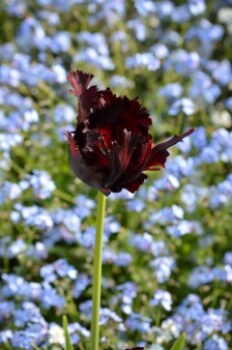 |
9. Tulip ShirleyAnother beautiful double late tulip, Shirley has soft pink petals with a white edge, giving it a delicate and romantic look, that rounds out spring in style. |  |
10. Tulip Blue ParrotWith its deep blue-purple petals and ruffled edges, Blue Parrot is a stunning addition to any garden. This late blooming tulip variety is perfect for adding a pop of bold colour to your spring landscape. |  |
11. Tulip BallerinaThis striking tulip variety features bright orange petals with a yellow edge. Its long, slender stems make it a great choice for cut flower arrangements. | 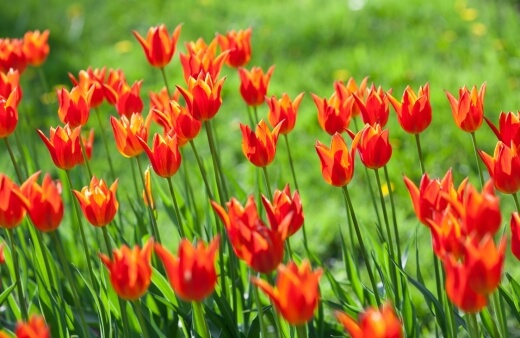 |
12. Tulip Apricot ImpressionThis Darwin hybrid tulip variety has large, apricot-coloured blooms with slightly fringed edges. Its soft yet vibrant hue adds a warm and inviting touch to any garden or floral arrangement. |  Source: White Flower Farm |
13. Tulip Flaming FlagWith its vibrant red and yellow petals, Flaming Flag is a colourful and eye-catching tulip variety. Its strong stems make it a great choice for cutting and arranging in vases. |  |
14. Tulip Candy PrinceA beautiful soft pink tulip variety, Candy Prince features fringed petals with a white edge. Its delicate and feminine blooms are perfect for adding a romantic touch to your garden. |  |
15. Tulip Green WaveThis unique tulip variety features green petals with a white edge that create a wave-like effect. Its unusual colour and shape make it a standout choice for any garden. |  Source: Sugar-Sunshine-and-Flowers |
16. Tulip Ice CreamWith its pure white petals and fringed edges, Ice Cream is a beautiful and elegant tulip variety. Its blooms are long-lasting and perfect for cutting. |  |
17. Tulip GreenlandThis striking tulip variety features bright pink petals with a white edge, creating a beautiful contrast. Its long, sturdy stems make it a great choice for cut flower arrangements. | |
18. Tulip PurissimaA classic white tulip variety, Purissima features large, pure white blooms that are perfect for adding a touch of elegance to your garden. |  |
19. Tulip Brown SugarThis unique tulip variety features brownish-red petals with a yellow edge, creating a warm and earthy look. Its unique colour and shape make it a standout choice for any garden. |  Source: Sarah Raven |
20. Tulip FoxtrotThis late-blooming tulip variety features soft pink petals with a white edge, creating a beautiful and delicate look. Its strong stems make it a great choice for cutting and arranging in vases. | 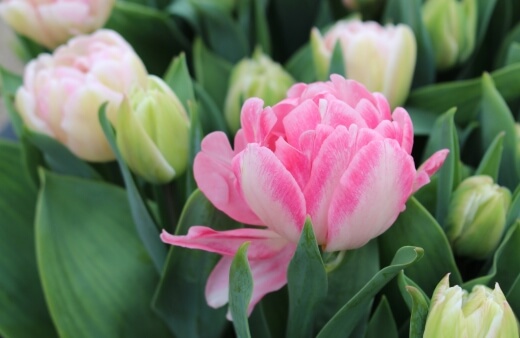 |
21. Tulip Happy GenerationHappy Generation is an especially vibrant tulip, particularly for cottage gardens. It features deep red flashes, over bright white coloured petals, and in ideal conditions will also display variegated foliage. |  |
1. Tulip Apeldoorn Elite

This Darwin hybrid tulip has large, bright red blooms on sturdy stems, and gorgeously gentle orange lobes on each petal, which overlap each other for a few fleeting weeks in spring.
2. Tulip Queen of the Night

This single late tulip has deep maroon, almost black blooms that are perfect for adding drama to your garden. You don’t need me to tell you how rare black flowers are, so finding something this close makes it pretty irresistible to collectors.
3. Tulip Monte Carlo

This double late tulip has bright yellow blooms that are perfect for adding a pop of colour to your garden.
4. Tulip Orange Emperor

This Darwin hybrid tulip has bright orange blooms that will bring a burst of warmth to your garden. It’s petals flare out gently, and the short foliage allows the stems to stand out by themselves, which also makes them ideal cut flowers.
5. Tulip Pink Impression

This Darwin hybrid tulip has large, soft pink blooms that are perfect for adding a romantic touch to your garden.


Get Your Free Guide:
Master Growing Australian Natives eBook
A Must Have Complete Guide for Every Australian Garden
Get Your Free Guide:
Master Growing Australian Natives eBook
A Must Have Complete Guide for Every Australian Garden
6. Tulip Red Impression

Red Impression, a Darwin hybrid tulip, has large, bright red blooms that make a statement. For me, nothing will ever really come close to a basic red tulip, like Red Impression. They just sum up spring in the most simple way.
7. Tulip White Triumphator

Source: J. Parker's
A classic tulip variety, White Triumphator features large, pure white blooms that will brighten up any garden. With dramatically flared petals, and pristine white colouration, they are an ideal continuation from snowdrops, and add early colour to white borders.
8. Tulip Black Parrot

This dramatic tulip variety features bold, deep purple-black petals, offset by fiery pinks, that are sure to make a statement. Its ruffled blooms add an extra touch of texture and interest to any garden.
9. Tulip Shirley

Another beautiful double late tulip, Shirley has soft pink petals with a white edge, giving it a delicate and romantic look, that rounds out spring in style.
10. Tulip Blue Parrot

With its deep blue-purple petals and ruffled edges, Blue Parrot is a stunning addition to any garden. This late blooming tulip variety is perfect for adding a pop of bold colour to your spring landscape.
11. Tulip Ballerina

This striking tulip variety features bright orange petals with a yellow edge. Its long, slender stems make it a great choice for cut flower arrangements.
12. Tulip Apricot Impression

Source: White Flower Farm
This Darwin hybrid tulip variety has large, apricot-coloured blooms with slightly fringed edges. Its soft yet vibrant hue adds a warm and inviting touch to any garden or floral arrangement.
13. Tulip Flaming Flag

With its vibrant red and yellow petals, Flaming Flag is a colourful and eye-catching tulip variety. Its strong stems make it a great choice for cutting and arranging in vases.
14. Tulip Candy Prince

A beautiful soft pink tulip variety, Candy Prince features fringed petals with a white edge. Its delicate and feminine blooms are perfect for adding a romantic touch to your garden.
15. Tulip Green Wave

Source: Sugar-Sunshine-and-Flowers
This unique tulip variety features green petals with a white edge that create a wave-like effect. Its unusual colour and shape make it a standout choice for any garden.
16. Tulip Ice Cream

With its pure white petals and fringed edges, Ice Cream is a beautiful and elegant tulip variety. Its blooms are long-lasting and perfect for cutting.
17. Tulip Greenland

Source: The National Gardening Association
This striking tulip variety features bright pink petals with a white edge, creating a beautiful contrast. Its long, sturdy stems make it a great choice for cut flower arrangements.
18. Tulip Purissima

A classic white tulip variety, Purissima features large, pure white blooms that are perfect for adding a touch of elegance to your garden.
19. Tulip Brown Sugar

Source: Sarah Raven
This unique tulip variety features brownish-red petals with a yellow edge, creating a warm and earthy look. Its unique colour and shape make it a standout choice for any garden.
20. Tulip Foxtrot

This late-blooming tulip variety features soft pink petals with a white edge, creating a beautiful and delicate look. Its strong stems make it a great choice for cutting and arranging in vases.
21. Tulip Happy Generation

Happy Generation is an especially vibrant tulip, particularly for cottage gardens. It features deep red flashes, over bright white coloured petals, and in ideal conditions will also display variegated foliage.
How to Grow Tulips in Australia
Tulips are a beautiful and popular spring flower that can add a pop of colour and elegance to any garden. While they are traditionally associated with cooler climates, with the right care and attention, tulips can be successfully grown in Australia.
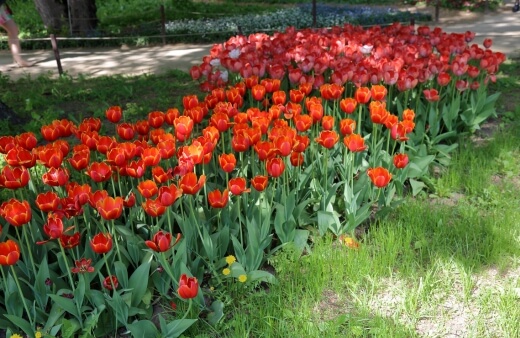
When to Plant Tulips
Tulip bulbs should be planted in late autumn, between late April and mid-May, when the soil has cooled down. This allows the bulbs to develop a strong root system before the onset of winter.
Planting tulip bulbs for those who reside in cold climate areas could range from early to late autumn while those who live in warmer areas should wait until late autumn to early winter. The soil needs to be 15°C before you plant your tulip bulbs, which in warmer areas won’t occur until much later.
In warmer gardening zones you may need to acclimatise your tulip bulbs by placing them in the fridge for 4-6 weeks. This tricks them into thinking that they’re in a cold area and can therefore begin to grow.
How to Plant Tulips
Tulip bulbs should be planted in a location that receives full sun for at least six hours a day, with well-draining soil. The planting depth should be around 2-3 times the size of the bulb itself.
After planting, it's important to water the tulip bulbs well to settle them into their new home. If you're planting tulips in pots, choose a container with good drainage and fill it with a high-quality potting mix.
Place the bulbs in the soil with the pointed end facing upwards and cover them with a layer of soil that's roughly twice the height of the bulb. Water well and place the pot in a sunny spot.
How to Propagate Tulips
Tulips can be propagated by division or from bulbs.

Propagating Tulips Using Division
Division involves separating clumps of bulbs into smaller clusters and replanting them. This method is best done in late summer or early autumn when the foliage has died back.
Dig up the bulbs and gently separate them into individual bulbs, or smaller clumps. Replant the pieces immediately.
Tulips Propagation Using Fresh Bulbs
Propagating tulips from fresh bulbs is the most common method of propagation, and will also guarantee flowers every year. To do this, you'll need to purchase tulip bulbs from a garden centre or online store. Look for high-quality bulbs that are firm and free of any blemishes or mould.
When planting tulip bulbs, it's important to choose a spot with well-draining soil and plenty of sunlight. The bulbs should be planted in the autumn, around 6-8 weeks before the first frost is expected.
Plant them with the pointed end facing upwards, and cover them with soil. Water well after planting, and then leave them alone until their first sprouts push through the soil in spring.
Caring for Tulips
Tulips don't require a lot of maintenance, but there are a few things you can do to keep them looking their best.
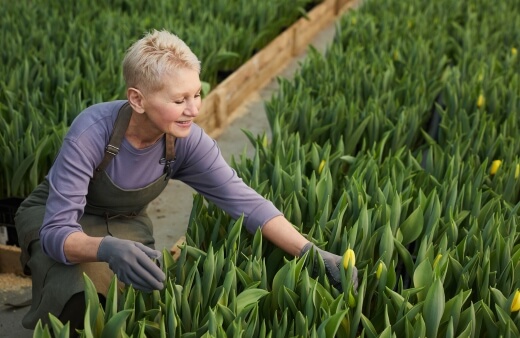
Water Regularly
Tulips need regular watering, especially during their growing season. Aim to water deeply once a week, rather than shallow watering every day. This will encourage the roots to grow deep and strong.
Tulip Fertiliser
Tulips benefit from a dose of fertiliser each year, preferably in the autumn when they're planted. Use a slow-release fertiliser like bone meal, mixed into the soil when planting, or sprinkle over a slow release bulb fertiliser.
Deadhead Spent Blooms
Once your tulips have finished blooming, it's important to deadhead the spent flowers. This will prevent the plant from putting energy into producing seeds, and instead encourage it to focus on producing new bulbs for next year's blooms.
Lift Bulbs in Winter
If you live in an area with cold winters, it's a good idea to lift your tulip bulbs and store them in a cool, dry place until spring. This will protect them from freezing and ensure they're ready to bloom again next year.
Transplanting Tulip Bulbs
For varying reasons there may come a time when a gardener wants their tulips transplanted right in the middle of their growing period. They may find they need the area for something else or some type of construction is about to happen which will jeopardise the bulbs. Can they be replanted once they’ve begun sprouting?
Sure. However, you may not get the best blooms you were hoping for, if any at all for that season but it will prepare them to flower the following year at the very least.
Replant the sprouting tulip bulbs in a new position at the same depth you would normally plant just the bulb. Fertilise immediately with a good organic fertiliser such as blood and bone and water in well.
If the leaves end up falling over and start to wither, cut them off half way to give the bulb some respite. This way the tulip bulb can focus its energy into producing flowers for next year rather than expending itself propping up some foliage.
Storing Tulip Bulbs
Wash any remaining soil off the bulb and then place it as a single layer in a basket or tray that has enough air to move through it. Store the bulbs in a cool, dry area until autumn when you can begin to divide the bulbs and replant.
When storing tulip bulbs remember to label them especially if you have different varieties.
Common Tulips Pests and Diseases
There aren’t many tulip diseases, and they suffer even less from pests, but some common problems in many gardens include aphids, slugs, botrytis, and tulip fire.
Aphids
These tiny insects feed on the sap of the plant and can cause stunted growth and distorted leaves. They can be controlled with insecticidal soap or neem oil.
Refer to our comprehensive guide on how to deal with aphids and prevent them from coming back.
Slugs and snails
These pests can eat holes in the leaves and damage the bulbs. Use slug and snail bait to control them.
Botrytis blight
This fungal disease causes greyish-brown spots on the leaves and flowers, and can eventually cause the plant to rot. Remove infected plant material and treat with a fungicide.
Tulip fire
This fungal disease causes brown spots on the leaves and flowers, and can eventually kill the plant. Infected plants should be removed and destroyed, and the soil should be treated with a fungicide.
Tulips Frequently Asked Questions
What do you do with tulips after they bloom?
After tulips have finished blooming, they should be deadheaded. For species tulips (usually the long, pointy types) they can be left to go to seed, provided there are no other tulips in the garden that could cross-pollinate them, which will allow them to naturalise in your borders.
For others, removing spent flowers leaves the top growth to die back and feed the bulb.
Can tulip bulbs be left in the ground?
Depending on the variety, tulips can be left in the ground after flowering, but in very wet conditions, clay soils, or irrigated pots, bulbs may rot. In most of Australia, provided your tulip bulbs are protected from extremely damp winters, they will be fine in the ground.
Do tulips multiply?
Tulips, like most bulb plants, multiply from the root and from seed. Multiplying tulips from seeds is slow, but possible. Personally, I believe it's best to deadhead tulips, and leave bulbs in the ground to multiply, providing a weak bulb feed to the soil during and after flowering.
What is the lifespan of a tulip?
Most gardeners and horticulturalists will tell you that tulips have a lifespan of about five years at most, but we’ve had a single patch of basic red tulips in our garden for so long that I don't even remember the variety.
The truth is that tulips, if they like their location, and are a simple type, will usually go on flowering for years.
What to do with your tulips at then end of flowering?
Some bulbs, like daffodils and jonquils, are fine to leave in the ground season after season. Tulips need to be dug up however and left to dry out. Wait until the leaves have completely turned brown and then with a garden fork carefully prise them to the top of the soil.
Wrapping Up Our Tulips Growing Guide
Growing tulips in Australia, while challenging, is very possible, and incredibly rewarding for any gardener who gets it right. With the right preparation, you can enjoy a stunning display of colourful tulips in your garden each and every spring but do remember to adapt the varieties you grow for your local climate.
Whether you choose to plant traditional tulip varieties or experiment with more unique and exotic types, growing your own tulips adds beauty and elegance to any garden.
Published on May 12, 2023 by Maisie Blevins
Last Updated on September 20, 2024




